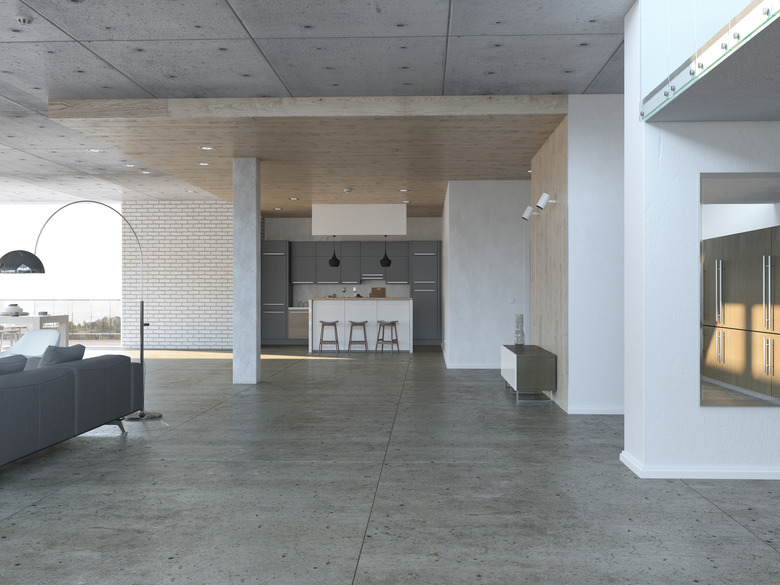Repairing Cracked And Crumbling Gypcrete Floors
Gypcrete, the common spelling for a trademarked brand of gypsum concrete by Maxxon, is correctly known by its industry designation — Gyp-Crete®. But because it was the first trademarked gypsum underlayment flooring product to hit the market in 1972, it has a longstanding history of simply being called Gypcrete. Repairing cracking and crumbling Gypcrete floors typically is a job best left to the experts, but you may be able to do it yourself if you have only a small section of flooring to fix.
Gypcrete Composition and Applications
Gypcrete Composition and Applications
As its name hints, Gypcrete is a concrete aggregate that's made of gypsum, sand and Portland cement, according to Protective Services. This mixture, when mixed with water, yields a concrete product that is more lightweight than other types of concrete. Gypcrete weighs approximately 13 pounds for a square-foot slab that's 1.5 inches thick, compared to other types of concrete that weigh approximately 18 pounds for the same slab dimensions.
Gypcrete is the underlayment of choice for many contractors who build apartments, condominiums, townhomes and hotels, not only for its lightweight quality but also for its fire resistance, sound mitigation and radiant heat conductivity. You'll likely not have Gypcrete as a floor underlayment in your single-family residence, but you may have it if you live in a multifamily dwelling.
Disadvantages of Gypcrete
Disadvantages of Gypcrete
Even though it has many advantages, Gypcrete also has some notable disadvantages. Because it is lightweight, it's also prone to cracking as an underlayment to installed floorings above it. Its surface area is soft and chalky, which makes it susceptible to crumbling and becoming detached from the subfloor beneath it. As with other types of flooring, subflooring and underlays, improper installation of Gypcrete exacerbates its susceptibility to damage; for example, it must be properly sealed to mitigate cracking and crumbling.
Gypcrete Repair for Minor Damage
Gypcrete Repair for Minor Damage
To assess the extent of the damage to a Gypcrete underlayment, you'll first have to remove the existing floor covering. Next, you'll need to remove all the loose Gypcrete. This may kick up a lot of dust, which you'll need to sweep away using a broom with stiff bristles, so you may want to wear a respirator mask. Use a high-efficiency particulate air vacuum to remove as much dust as possible.
Apply a primer or primer-sealer combination product, such as USG Durock Fusion Primer, according to label directions. When the primer has cured and the subfloor surface is sealed, apply a floor patch product using a trowel, following the label directions. The newly applied patch will take from three to five days to dry completely. You can speed this process by placing a box fan near the patched area.
Gypcrete Repair for Extensive Damage
Gypcrete Repair for Extensive Damage
When the damage to a Gypcrete underlayment is extensive, it may be time to call a flooring professional to do the job. Simply using a trowel to apply a floor patch product won't work in this scenario, and a pourable product is needed to repair widespread damage. After removing all the cracked and crumbled pieces of Gypcrete and vacuuming all the dust, the entire surface of the subfloor must be primed and sealed before covering it with a self-leveling gypsum capping product.
After repairing a Gypcrete underlayment, whether the damage is minor or extensive, you'll have to apply a floor-covering adhesive and install new flooring on top of the Gypcrete.
